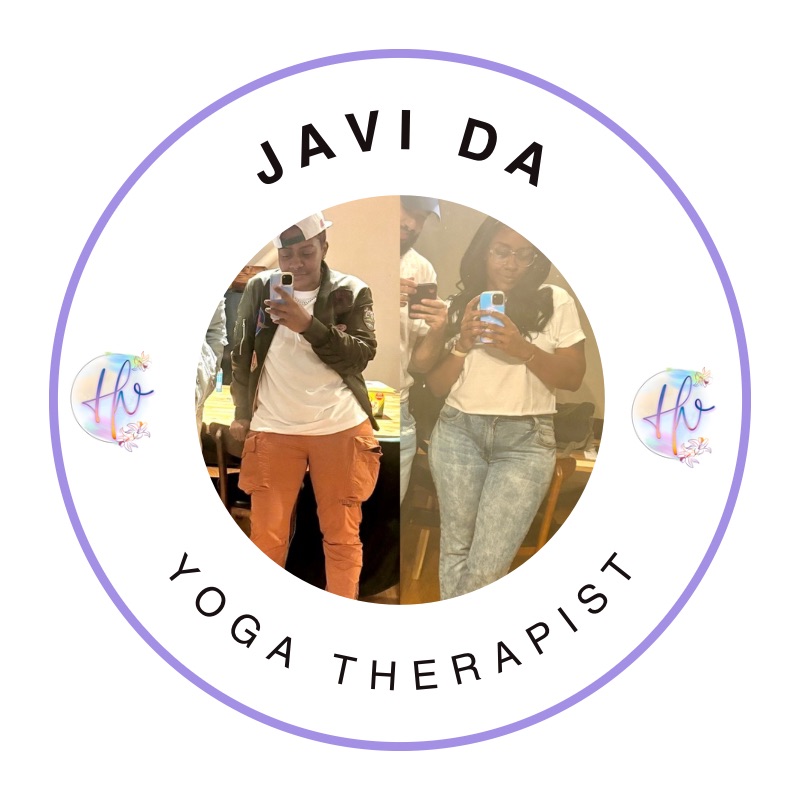Transformative Power of Yoga for Emotional Healing
- Javi Da Yoga Therapist

- Oct 10
- 4 min read
Updated: Oct 15
Yoga is celebrated not only for its physical benefits but also for its significant impact on emotional health. In today's fast-paced world, where stress and anxiety are common, yoga offers a healing sanctuary. This post explores how yoga can transform emotional healing by providing useful insights and practical tips for those seeking balance and solace.
Understanding Emotional Healing
Emotional healing involves addressing feelings of pain, trauma, and distress. It requires acknowledging emotions, understanding their roots, and developing strategies to move forward. Many people carry emotional burdens that can manifest as anxiety or depression. The World Health Organization reports that over 264 million individuals worldwide suffer from depression, illustrating the need for effective healing methods.
Yoga provides a holistic approach to emotional healing, integrating mind, body, and spirit. By combining mindful movement, breath control, and meditation, individuals can build awareness and deepen their emotional connections.
The Mind-Body Connection
One core concept of yoga is the mind-body connection. This principle posits that emotional states are closely linked to physical experiences. For example, prolonged stress can lead to tension in the shoulders or difficulty breathing. Research has shown that nearly 80% of people experience physical symptoms due to emotional stress at some point.
When practicing yoga, individuals learn to tune into their bodies, enhancing their awareness of both physical sensations and emotional responses. This can help in identifying discomfort areas and facilitate healing through targeted poses and breathing techniques.
Breathwork: The Foundation of Emotional Healing
Breath is a powerful element in yoga that plays a crucial role in enhancing emotional health. Pranayama, or breath control, is essential in yoga practice. Focusing on breath can help calm the mind and reduce anxiety. According to a study published in the journal Psychological Science, participants who practiced breath control experienced a 40% reduction in anxiety symptoms.
Intentional breathing activates the parasympathetic nervous system, promoting relaxation. By incorporating breathwork into your routine, you can gain better control over overwhelming emotions and create a grounding effect in your daily life.
Yoga Poses for Emotional Release
Certain yoga poses are especially beneficial for emotional healing. Include these foundational asanas in your practice:
1. Child’s Pose (Balasana)
Child’s Pose encourages relaxation and surrender. It gently stretches the back and hips, helping release built-up tension. Many practitioners report feeling a sense of safety and comfort while in this pose.
2. Heart-Opening Poses
Poses like Cobra (Bhujangasana) and Camel (Ustrasana) effectively open the heart center. They encourage emotional openness and can help alleviate feelings of sadness or grief, empowering practitioners to embrace vulnerability and release pent-up emotions.
3. Forward Bends
Forward bends, such as Standing Forward Bend (Uttanasana), can promote introspection and emotional release. These poses provide grounding and calmness, allowing individuals to process their feelings more effectively.
4. Legs-Up-the-Wall Pose (Viparita Karani)
This restorative pose encourages relaxation and can help alleviate feelings of anxiety. It promotes blood flow and offers a calming effect, serving as a perfect addition to your emotional healing toolkit.
The Role of Meditation in Emotional Healing
Meditation is a vital aspect of yoga that enhances emotional healing. By allowing individuals to cultivate mindfulness, meditation helps develop a deeper understanding of thoughts and feelings. Studies have shown that regular meditation can lead to a 10-15% reduction in stress levels.
Techniques like guided meditation or loving-kindness meditation can be particularly effective for emotional healing, fostering a stronger sense of compassion and understanding for oneself and others.
Creating a Supportive Environment
To harness the full power of yoga for emotional healing, creating a supportive space is crucial. Consider the following elements:
Dedicated Space: Set up a quiet, comfortable area for your practice, free from distractions. Research indicates that a well-defined space can improve focus and commitment by up to 25%.
Calming Elements: Use soothing items such as essential oils, candles, or soft music to create a tranquil atmosphere. These elements can enhance relaxation and emotional release.
Consistent Routine: Establishing a regular practice schedule is essential. Whether daily or a few times a week, consistency helps build strength and emotional resilience.
Seeking Guidance
While yoga can be a powerful tool for emotional healing, the support of a qualified instructor or therapist can greatly enhance your journey. A knowledgeable teacher can provide personalized guidance and help you navigate your emotional landscape more effectively.
Consider attending workshops or retreats focused on emotional healing through yoga. These experiences offer valuable insights and foster a sense of community among like-minded individuals, often supporting quicker healing.
Embrace Your Journey
The power of yoga for emotional healing is remarkable. By fostering a connection between the mind and body, yoga provides a pathway to understanding and releasing emotional pain. Through consistent practice of breathwork, mindful movement, and meditation, you can build resilience, discover inner peace, and embark on a fulfilling journey toward self-discovery.
As you start exploring yoga, remember that healing is a personal experience. Be patient with yourself, letting the practice unfold naturally. Embrace yoga's transformative potential and allow it to guide you toward emotional balance and well-being.





Comments